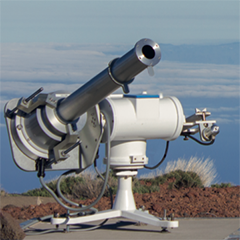‘Observe the evening red sky, which gives a reliable forecast of fair weather next day’. We’ve all heard this expression, which has a long history and valid phenomena for mid latitude regions. What is behind the ordinary bright and white sunlight, which is actually composed of a spectrum of colors that grade from violets and blues at one end to oranges and reds on the other end.
Inspired by the ‘colors of the sky’ at an early stage EKO developed interest to provide measurement solutions to quantify solar energy distribution within the solar spectrum and spectral sky irradiance. Both affect many vital processes on earth and the diverse applications of solar energy feed our ideas and ambitions to develop new technology and measurement methods.
How it started
Global Irradiance has been measured with pyranometers for over the last hundred years, spectral measurement technology and turn-key spectral devices came much later. With a spectrometer it is as if you look at the distribution of light with a microscope and are capable to resolve all details of the spectrum. Not only the solar spectrum but also the characteristics of materials when exposed to light or particles in the sky, which interact with the spectral energy uniquely.
Before reaching the current spectrometer technology EKO went through several stages of fundamental development that goes back to the 1960’s. At that time, electronic devices that are currently available and essential for many functions were at the initial stages of development, presenting several technical challenges. Data acquisition was performed by either observing analog meters, or by paper chart recorders writing the data to a paper roll with a writing needle meter. The predecessor of the spectroradiometer at EKO was called MR-3 and it was the first EKO multi band spectrophotometer based on a turret method. The instrument was composed by a single detector, four optical cut-off filters (420nm, 500nm, 550nm and 600nm) and one transparent glass mounted on a rotating wheel. The energy passing through each filter gave the total amount of energy at a longer wavelength than the cut off wavelength, and the combined differences between the measured values with the glass and filters gave the energy within each wavelength band, allowing to measure the global horizontal radiation and to quantify the relative spectral energy intensity in each wavelength range. This device was mainly used for photosynthesis research in the field of agricultural science.


























